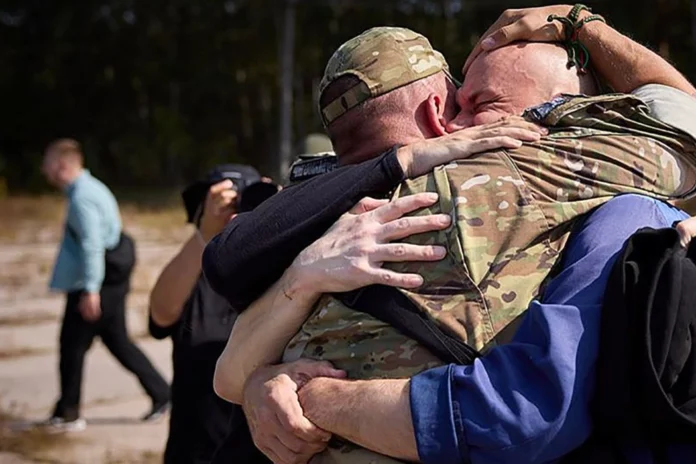Russia and Ukraine exchanged 185 prisoners of war each on Thursday, marking the latest in a series of swaps that have continued despite the lack of progress toward a peace deal.
Russia’s defence ministry announced on Telegram that Ukraine had returned 185 Russian servicemen, along with 20 civilians, as part of the exchange.
Ukrainian President Volodymyr Zelensky confirmed the swap, sharing photographs of the released Ukrainians draped in national flags, smiling, and freshly shaven.
“Alongside our defenders, civilians are also returning home — 20 of our people. Everyone will definitely receive all the support they need,” Zelensky wrote on social media. He added that more than 7,000 Ukrainians have been brought home since the start of Russia’s full-scale invasion in 2022.
Large-scale prisoner exchanges have been one of the few tangible outcomes of the three rounds of peace talks held between the two countries in Istanbul from May to July. The sides have also carried out several repatriations of fallen soldiers, making these exchanges one of the only areas of ongoing cooperation since the war began.
Tens of thousands of soldiers have been killed on both sides since the invasion, though neither Russia nor Ukraine regularly publishes casualty figures.
Meanwhile, Zelensky warned European countries to prepare for potential drone strikes following what he described as “treacherous” Russian attacks on Ukraine.
In a related development, the United States is reportedly preparing to share intelligence to support Ukrainian long-range strikes on energy infrastructure inside Russia. Washington has previously provided intelligence but has not publicly acknowledged assisting in attacks on Russian energy targets.
The move would make it easier for Ukraine to strike facilities such as refineries, pipelines, and power plants, with the goal of cutting off revenue streams to the Kremlin.
Zelensky accused Russia of knowingly targeting infrastructure in Slavutych, leading to a power outage at the Chornobyl nuclear plant. Off-site power was restored 16 hours later, according to the International Atomic Energy Agency.

